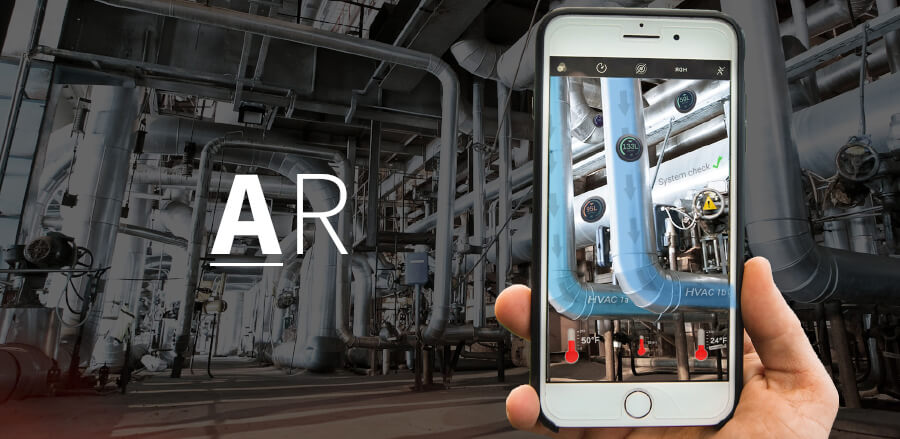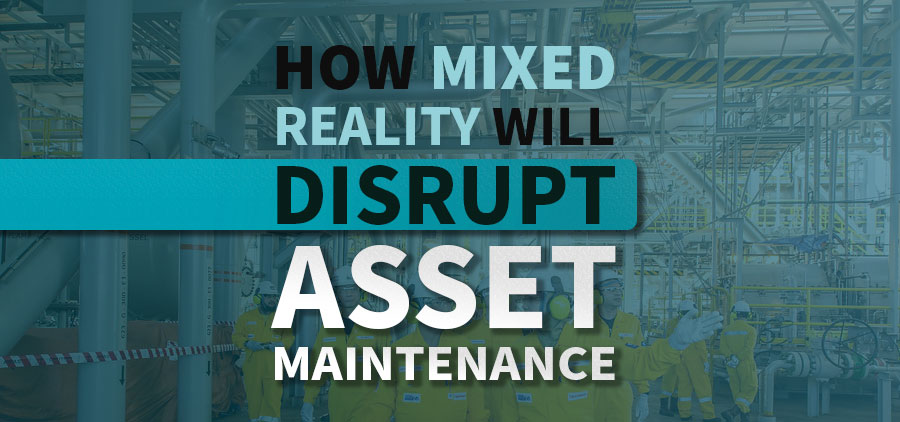DISCLAIMER: This article is not intended to make the case for AR! If you’re here reading this now, then you’re looking at augmented reality glasses and headsets with earnestness, and wondering how you could possibly select from the mix of vendors and technology in the market.
Let me help you eliminate some vendors from your list right away…
If the first thing they do is come at you with a slick brochure and some slides in PowerPoint talking about their technology… RUN!
Why? Because vendor selection is NOT about the technology!
(Mostly. This will make more sense at the end.)
With that settled, let’s get into it. Before we dive into what will make the difference in your selection, let’s look at some of the key factors that will often go into a project, depending on the project type. These project types are known as either Greenfield or Brownfield.
Here are a few for a Greenfield plant (brand new, quite literally starting in a green field in many cases):
- Availability of engineering resources
- Ability to meet or beat the expected time to completion
- Infrastructure required to support the technology both near and long-term
- Specific technological features, advantages and benefits
- $$$
Then we have the Brownfield plant (existing facility that is being modernized, improved or expanded in some way.) This can include all of the Greenfield elements, plus some of the following:
- Satisfaction with the incumbent technology
- Process and production downtime
- Existing infrastructure
- $$$
Augmented Reality in the Greenfield versus Brownfield debate?
Augmented reality in a Greenfield environment is going to be less prevalent than Brownfield for the next few years, but there are advantages to be realized by early adopters looking at incorporating AR right from the start.
- Developing the infrastructure for an augmented and predictive asset management philosophy from the start has a number of advantages. Digital infrastructure can be built from the ground up without having to maneuver around existing systems of varying age and condition.
- New operators can be trained from the beginning on the AR platform, using tools like Augmented Reality Glasses and Headsets for day-to-day operations, or what will more commonly be used over the next few years; your mobile phone.
- Policies and procedures around emergency response and personnel management can be designed around the augmented reality infrastructure.
Greenfield Technological Selection Criteria
- Ease of integration to your DCS/PLC and any cloud-based analytics platforms that you are employing would be a critical factor in making this decision.
- Can the interface adapt to the control system HMI? Will the operational information be shown in the same format and context on AR glasses as it is displayed on the central control room screens?
- Is there clear guidance to the equipment manufacturers to incorporate the RFID information that links the asset to the digital manuals, so that the assets ship to site ready to interface?
- Can the solution easily scale and leverage industrial wireless infrastructure?
These are just some of the possible criteria, and it will vary based on your business. After all, what will matter in a manufacturing environment indoors is going to vary quite a bit from a refinery or chemical plant that is mostly situated outdoors. An understanding of the physical challenges each opportunity presents is crucial to having your solution fit your needs.
What about Brownfield?
The ability to transform your existing operations is highly dependent on what is already in place.
- Your AR solution provider should be able to integrate into whatever vintage of DCS that exists (within reason). If your PC’s are no longer supported by Microsoft, then you have a few steps to take before you’re ready for AR.
- AR solutions need to leverage efforts being made to enhance the industrial wireless infrastructure.
- AR for training and generational knowledge transfer are going to be critical to augmenting the vast segment of the population that will be exiting the workforce in the next several years.
- Starting small is, well, HUGE! The ability to scale from the pilot project level, all the way to full adoption across the organization will allow for the culture to gradually accept the changes being made, and will increase buy-in at every level. This is a major factor in realizing success.
As it is with Greenfield, Brownfield can vary quite a bit depending on the specific business looking to invest in augmented reality.
Speaking of business…
Through all of this, I have not mentioned a single specific feature that any vendor can claim as unique in the augmented reality headset/glasses space. Any augmented reality solution provider worth their salt should be able to consider all of the various infrastructure and integration requirements to some level. So those are not differentiators.
They should all be able to scale, and not require massive investments to start. Ok, so no differentiation there.
And yes, there will be technological features, advantages and benefits from one vendor to the next that may be the difference between choosing the red or the blue pill, but either way you will still find yourself tied to the Matrix. But this is not the key factor that will help you realize improvements to your business or your operations.
After all, as Industrial Augmented Reality is expected to reach US$70 billion in total market value by 2025, it’s becoming increasingly important to understand what separates potential vendors.
So, what must a vendor do to make the case?
Ask questions… that’s it
Your potential partner in an augmented reality journey should be like any technology or business partner. They should not be talking about the features or the tech or even their past successes. No, they should be looking to understand your operational, reliability, safety, and business challenges. Past successes should only be drawn upon if they are comparable and can help uncover some of the unknowns in a particular problem.
They should be diving down into various scenarios that have caused pain for the organization in the past, or helping drive awareness of potential pain if certain changes are not made in a timely fashion.
It should be all about YOU
Your vendor should understand the difficulties that you are facing, because only then will they be able to work with you in finding a solution. There is no value in a vendor that comes in and shows off how cool their stuff is, and then leaves you to figure out how best to apply it.
They should be focused on understanding the desired outcomes, not on which technology will apply! They should be working with you to develop a case for the return on investment so that upper management can see from their perspective why augmented reality is a worthwhile investment in growth or increased efficiency.
Steve Jobs famously said this back in the 90’s: “You’ve gotta start with the customer experience, and work backwards to the technology. You can’t start with the technology, and try to figure out where you’re gonna try to sell it”.
If a vendor starts the conversation trying to sell THEIR technology to you, without first demonstrating curiosity about YOUR business, then you have not yet found your true partner in this augmented reality phase of your digital transformation.
Keep looking…
In case you needed a nudge, right here might not be a terrible place to start ;)








